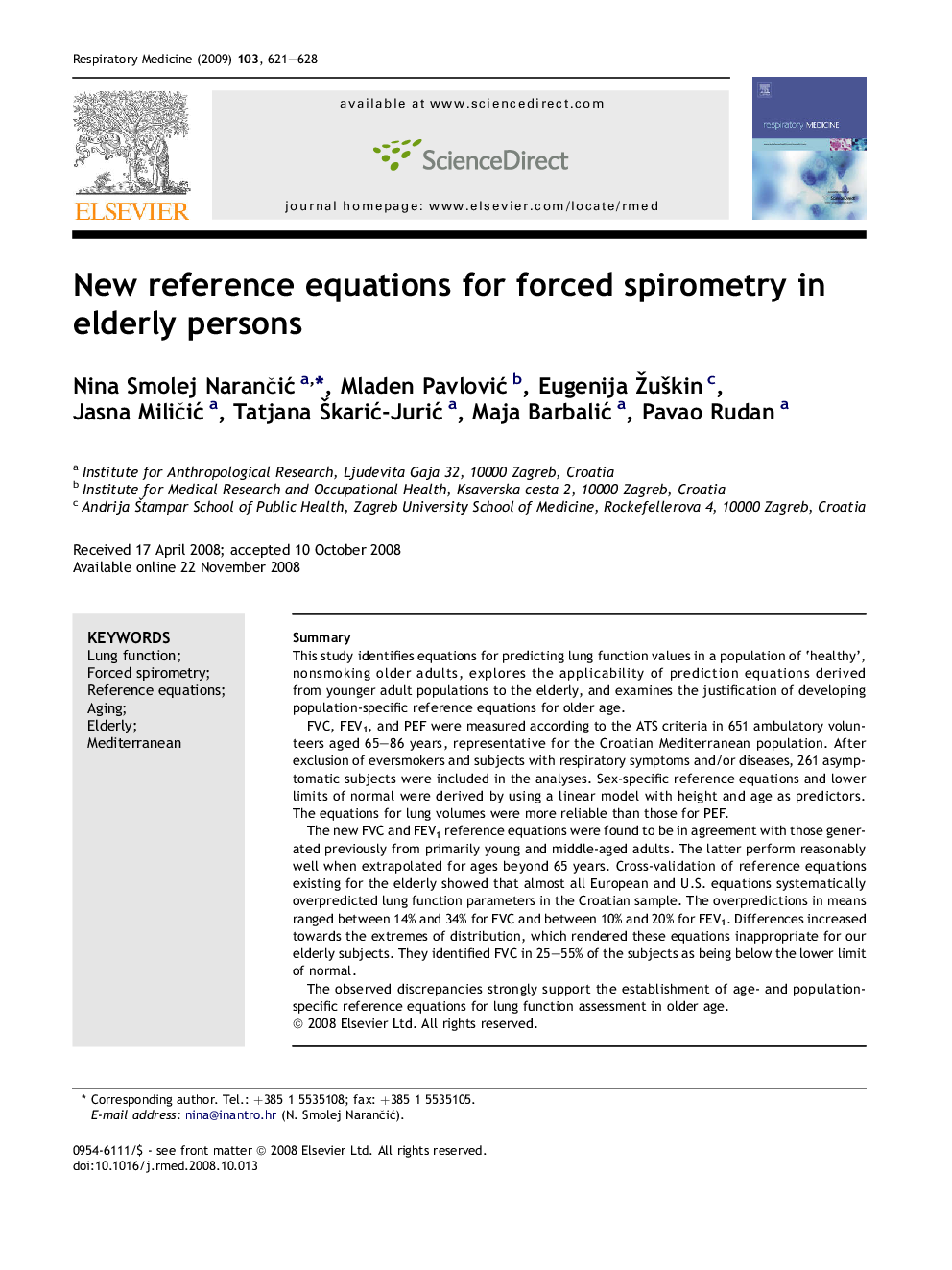| Article ID | Journal | Published Year | Pages | File Type |
|---|---|---|---|---|
| 4210926 | Respiratory Medicine | 2009 | 8 Pages |
SummaryThis study identifies equations for predicting lung function values in a population of ‘healthy’, nonsmoking older adults, explores the applicability of prediction equations derived from younger adult populations to the elderly, and examines the justification of developing population-specific reference equations for older age.FVC, FEV1, and PEF were measured according to the ATS criteria in 651 ambulatory volunteers aged 65–86 years, representative for the Croatian Mediterranean population. After exclusion of eversmokers and subjects with respiratory symptoms and/or diseases, 261 asymptomatic subjects were included in the analyses. Sex-specific reference equations and lower limits of normal were derived by using a linear model with height and age as predictors. The equations for lung volumes were more reliable than those for PEF.The new FVC and FEV1 reference equations were found to be in agreement with those generated previously from primarily young and middle-aged adults. The latter perform reasonably well when extrapolated for ages beyond 65 years. Cross-validation of reference equations existing for the elderly showed that almost all European and U.S. equations systematically overpredicted lung function parameters in the Croatian sample. The overpredictions in means ranged between 14% and 34% for FVC and between 10% and 20% for FEV1. Differences increased towards the extremes of distribution, which rendered these equations inappropriate for our elderly subjects. They identified FVC in 25–55% of the subjects as being below the lower limit of normal.The observed discrepancies strongly support the establishment of age- and population-specific reference equations for lung function assessment in older age.
